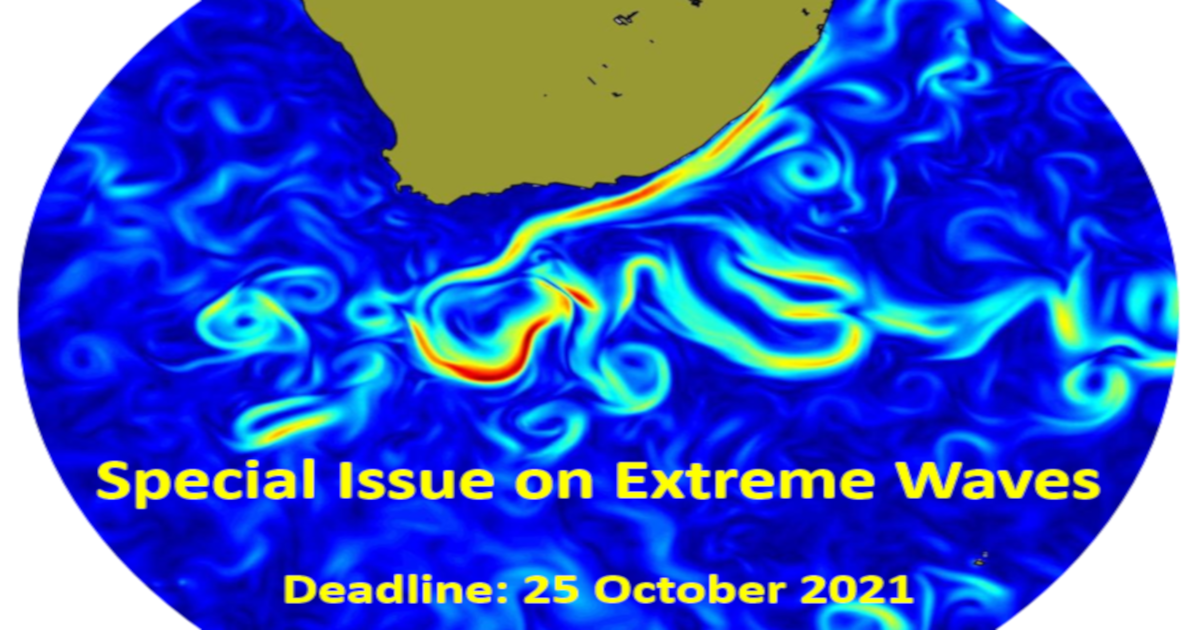- 2.8Impact Factor
- 5.0CiteScore
- 16 daysTime to First Decision
Extreme Waves
This special issue belongs to the section “Ocean Engineering“.
Special Issue Information
Dear Colleagues,
Please let me bring to your attention this information about the Journal of Marine Science and Engineering (JMSE) Special Issue on "Extreme Waves”.
This Special Issue will focus on the use of theoretical, numerical, and experimental approaches to better understanding and predicting extreme waves in the ocean. The Special Issue will cover the following topics:
- Extreme waves in the open ocean and in the coastal zone;
- Extreme events (storm surges and cyclones);
- Remote sensing of extreme waves;
- Probabilistic and statistical methods for extreme wave studies;
- Hindcasting and forecasting extreme waves;
- Interaction of waves and currents;
- Theoretical aspects;
- Climate change impact on extreme waves.
We look forward to reviewing your manuscripts!
Dr. Sonia Ponce de León
Prof. Dr. Takuji Waseda
Prof. Dr. Ian Young
Prof. Dr. Alfred Osborne
Guest Editors
Manuscript Submission Information
Manuscripts should be submitted online at www.mdpi.com by registering and logging in to this website. Once you are registered, click here to go to the submission form. Manuscripts can be submitted until the deadline. All submissions that pass pre-check are peer-reviewed. Accepted papers will be published continuously in the journal (as soon as accepted) and will be listed together on the special issue website. Research articles, review articles as well as short communications are invited. For planned papers, a title and short abstract (about 250 words) can be sent to the Editorial Office for assessment.
Submitted manuscripts should not have been published previously, nor be under consideration for publication elsewhere (except conference proceedings papers). All manuscripts are thoroughly refereed through a single-blind peer-review process. A guide for authors and other relevant information for submission of manuscripts is available on the Instructions for Authors page. Journal of Marine Science and Engineering is an international peer-reviewed open access semimonthly journal published by MDPI.
Please visit the Instructions for Authors page before submitting a manuscript. The Article Processing Charge (APC) for publication in this open access journal is 2600 CHF (Swiss Francs). Submitted papers should be well formatted and use good English. Authors may use MDPI's English editing service prior to publication or during author revisions.
Keywords
- extreme waves
- wind/wave modelling
- theoretical aspects
- remote sensing
- hindcasting and forecasting extreme waves
- storm surges and cyclones
- wave–current interaction

Image courtesy of Dr. Sonia Ponce de León
Benefits of Publishing in a Special Issue
- Ease of navigation: Grouping papers by topic helps scholars navigate broad scope journals more efficiently.
- Greater discoverability: Special Issues support the reach and impact of scientific research. Articles in Special Issues are more discoverable and cited more frequently.
- Expansion of research network: Special Issues facilitate connections among authors, fostering scientific collaborations.
- External promotion: Articles in Special Issues are often promoted through the journal's social media, increasing their visibility.
- e-Book format: Special Issues with more than 10 articles can be published as dedicated e-books, ensuring wide and rapid dissemination.

